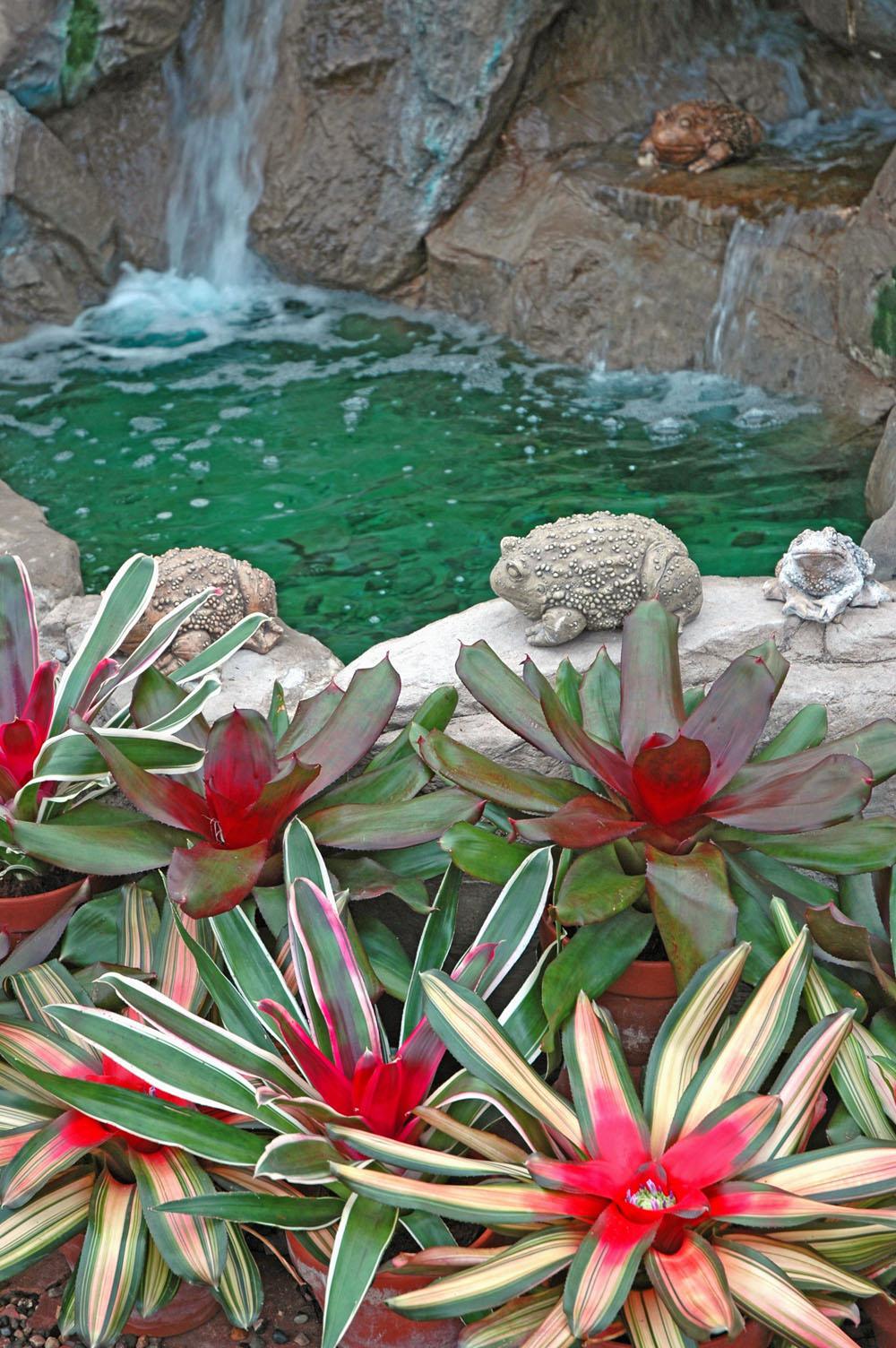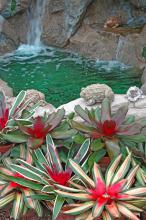Information Possibly Outdated
The information presented on this page was originally released on November 30, 2006. It may not be outdated, but please search our site for more current information. If you plan to quote or reference this information in a publication, please check with the Extension specialist or author before proceeding.
Bromeliads make great Christmas gifts
By Norman Winter
MSU Horticulturist
Central Mississippi Research & Extension Center
Poinsettias, cyclamen and kalanchoes rank as the most popular plants for decorating or gift-giving at this time of the year. This year, consider another plant that is readily available at most garden centers and florists: the bromeliad.
When I mention bromeliad, what is your first thought? Is it of a finicky, hard-to-grow tropical? Do you think it might be impossible to get it to rebloom? If those are your impressions, I want to help you reconsider.
Do you have those same concerns with poinsettias, cyclamen or even a potted mum? Of course not. We simply enjoy them for the season or as long as they look good in the home.
At a garden and patio show a couple years ago, a bromeliad exhibitor gave my wife an orange and yellow bi-colored Guzmania selection. It fit perfectly in our master bathroom with the colors of towels and rugs, as well as the color of paint.
Our bathroom is typical of many homes built in the last decade in that it has a row of lights similar to a television studio makeup room. We also have a skylight.
Our goal was to enjoy the bromeliad for as long as it looked good. Six months later, much to our amazement, it was still looking good. We found that the bromeliads love it in there. The bathroom is humid and has plenty of light. Add a little water to keep the soil moist and the plant's natural cup filled. Now we keep a bromeliad as a regular feature -- buying a new one every six to eight months.
In every case when we disposed of the old plant, there were plenty of pups I could have separated and planted. Right now, however, I don't want to be a bromeliad producer.
The Guzmania and another bromeliad called Vriesia, or flaming sword, represent a couple of really great buys for the home. They literally offer months of pleasure not only to large master baths, but anywhere the home could use a little extra touch.
When you think about the cost and length of performance time, I think we need to adjust our thinking about bromeliads. We don't have to be the Fairchild Tropical Garden outside of Miami to enjoy them, and we don't have to worry about being bromeliad producers.
Don't worry if they are epiphytic, which simply means their roots are used for anchoring instead of for water and nutrient uptake. Don't worry about whether they are terrestrial and grow like other plants. Sharon Cohoon wrote for Sunset magazine that they are almost as maintenance-free as plastic plants.
Neoregelias are another enjoyable group of bromeliads. Some are epiphytic and some are terrestrial, but we're not worried about this, right? We are going to enjoy them as long as they look good. In the case of Neoregelias, which are grown for their exotic foliage, they look great in your home for about four months.
Have you changed your thought pattern yet? The bromeliad will last longer than a poinsettia, longer than a cyclamen and a lot longer than a potted mum. So enjoy.









